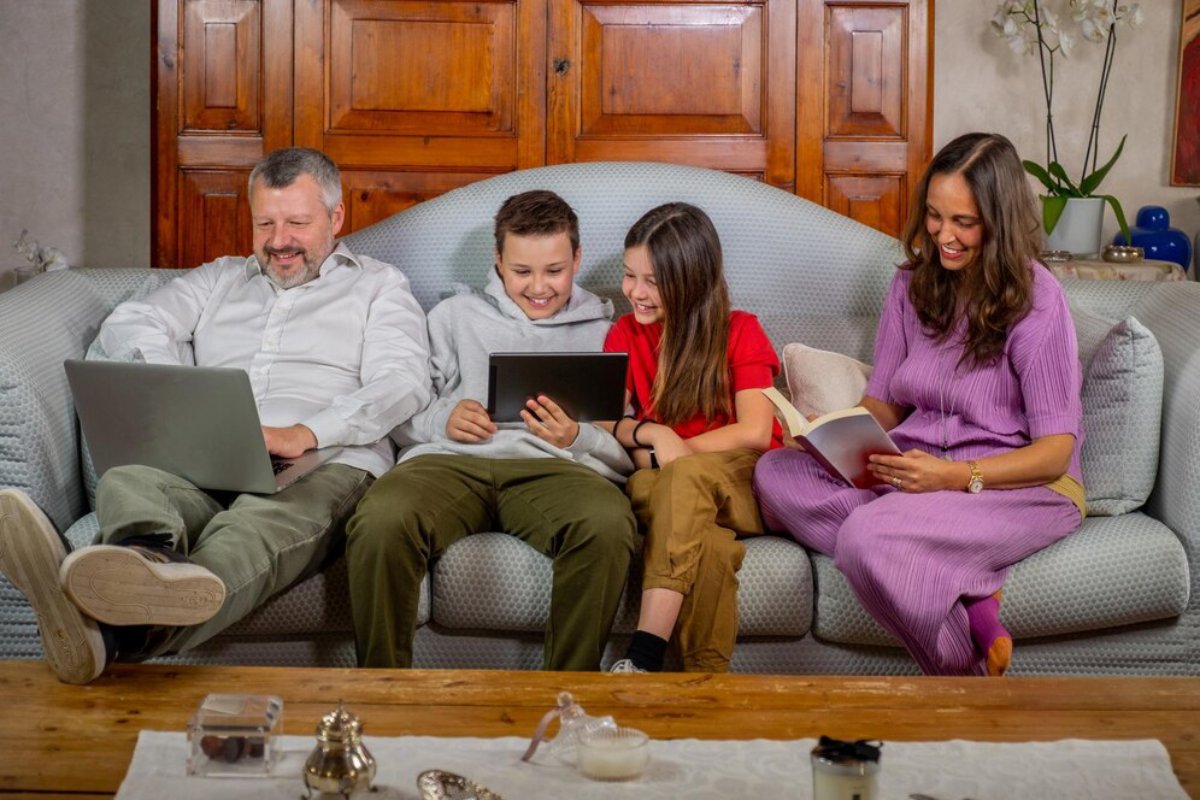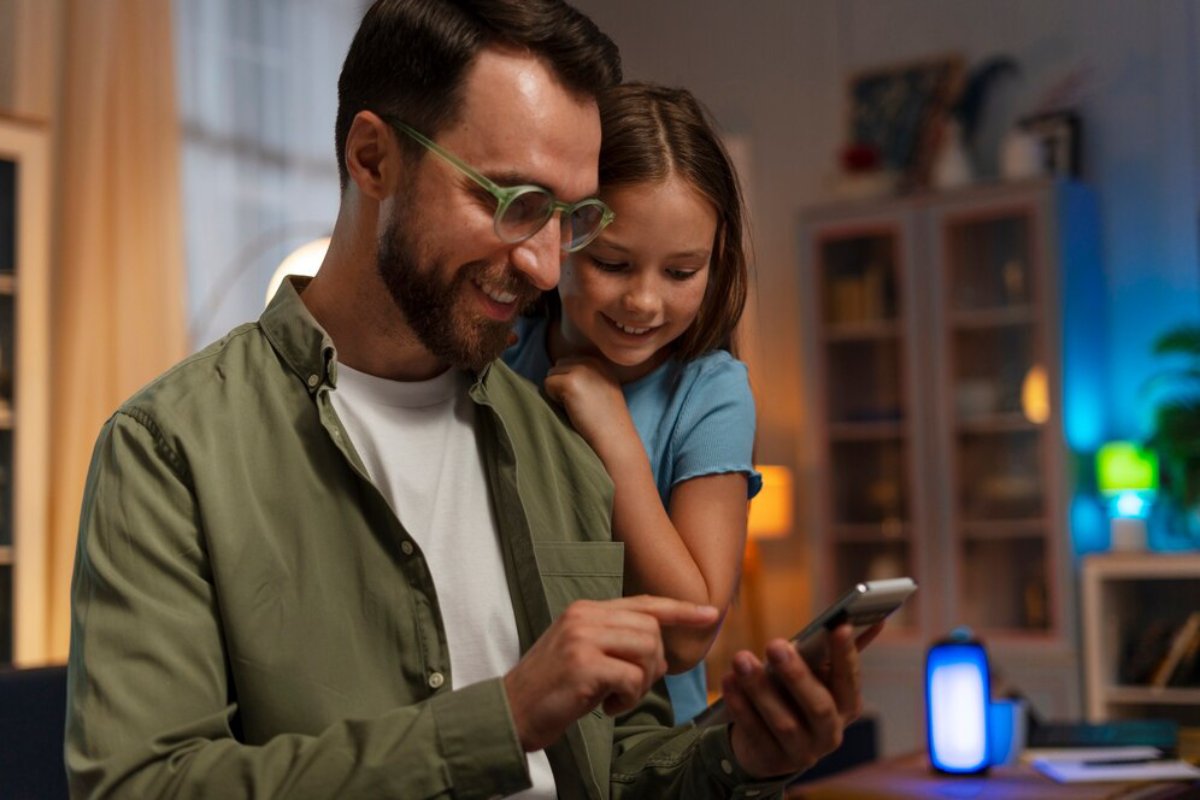
Monitoring Screen Time Without Invading Privacy: A Guide for Respectful Tech Parenting
Many parents worry about how much time their kids spend on screens today. Kids use technology more for learning, fun, and socialising. We need to balance their freedom to explore online with keeping them safe. This blog explores how to monitor screen time while respecting privacy and offers tips for tech-savvy parenting. Parents can effectively use a screen time monitor and keep privacy in mind, helping create a healthy digital space for their children.
As technology is a big part of our lives, parents must manage their kids’ screen time well. It’s important to prevent kids from overindulging in digital activities. But we must also respect their privacy and independence. This balance is key for a healthy relationship with technology. It promotes responsible use and digital literacy. In this blog, we’ll share strategies and tools for parents. These can help monitor screen time while respecting privacy. Our goal is to create a tech-friendly home.
Key Benefits

The Importance of Screen Time Management
Screen time management is vital for several reasons. Too much screen time can cause several problems, including bad sleep, less exercise, and fewer social interactions. Kids who spend a lot of time on screens usually interact less in person, which can hurt their social development. Screen time, especially before bed, can disrupt sleep. The blue light from devices may lead to sleep deprivation, harming overall health.
Parents can manage screen time well. This helps reduce risks and encourages a healthier lifestyle for their kids. Balanced screen time helps children explore different activities. They can read, play outside, and enjoy creative hobbies. These activities are essential for brain and emotional growth. They spark imagination and boost critical thinking skills. Encouraging kids to balance their screen time helps them prioritise activities. This way, they can develop time-management skills early on.
Respectful Tech Parenting
Respectful tech parenting helps kids explore their digital world and allows them space. This approach values privacy and autonomy. It helps children learn and grow in a supportive environment. Respecting children’s privacy helps parents build trust and open communication. This trust is key to tackling any digital challenges that come up.
Parents should show responsible screen time habits to model respectful tech parenting. Kids learn best by example. When parents pick offline activities, talk in person, and unplug from tech, kids often follow suit. Building a healthy relationship with technology helps kids grow their digital skills. It also teaches them self-control and responsible tech use as they get older.
Respectful tech parenting means being open and involved but not controlling. Parents should not just set rules; they should help their kids see why screen time and privacy matter. This teamwork helps kids feel heard and respected. It shows them that rules protect their well-being, not just control them.
Privacy Balance
Maintaining a privacy balance is crucial in today’s digital world. Children must feel their personal space is respected, even in the virtual realm. Privacy is key for a child’s independence and self-esteem, essential for their emotional well-being. Kids may feel resentful and distrustful if they think their online activities are being watched too closely.
Parents can set clear boundaries and use simple monitoring tools. This way, children can feel safe and respected as they explore the digital world. A good strategy is to talk openly about the monitoring in place. This helps children understand why it’s there. Involving children in setting screen time boundaries helps them own their choices. This way, they learn about digital well-being and feel respected.
Additional Expert Tips & Common Mistakes to Avoid

Best Practices for Monitoring Screen Time
It’s best to work together to monitor screen time. Talking to kids about screen time limits and why they matter can lead to better results. It creates understanding and fairness, which helps prevent feelings of rebellion or defiance.
Here are some expert tips for respectful tech parenting:
- Set Clear Boundaries: Establishing clear rules around screen time is essential. Involve your kids so they see why these limits matter. Set limits on daily hours for entertainment apps. Also, create screen-free zones, like during family meals or study time. Finally, establish curfews for device use. Getting your kids involved in setting these boundaries helps them stick to them. They feel more invested in the choices made.
- Use Technology Wisely: Screen time monitors help you track usage without being intrusive. These tools can provide valuable data on usage patterns while respecting privacy. Many new apps let parents track screen time on devices or specific apps. They do this without accessing personal messages, photos, or private data. This way, parents can monitor overall usage without violating a child’s privacy.
- Encourage Open Talk: Make a safe space for kids to share their online experiences. This openness can help address concerns and reinforce trust. Regular check-ins let children share their experiences, both good and bad. This allows them to feel supported in their digital journeys. It also lets us discuss safety, privacy, and respectful online behaviour.
Common Mistakes to Avoid
Monitoring screen time is essential, but parents should steer clear of these pitfalls:
- Being overly intrusive can lead to a breakdown in trust. It’s crucial to strike a balance between monitoring and respecting privacy. Constant surveillance can make kids feel like they are always being watched. This can lead to rebellion or dishonesty. It’s better to focus on setting boundaries and trust that children will adhere to them.
- Every child is unique. Their screen time needs can be different too. Tailor your approach to suit each child’s unique requirements. Older kids may need more freedom and responsibility with screen time. In contrast, younger kids often need more supervision. Adapt your approach based on your child’s maturity, needs, and digital skills.
- Encourage kids to enjoy offline activities too. Balance is key to their development. This balance is essential for holistic development. Many parents manage screen time, but they often forget to promote other activities. These include outdoor play, creative hobbies, and family time. Balance ensures that children develop well-rounded, fostering digital and physical growth.
Advanced Insights
Leveraging Technology for Respectful Monitoring
Technology has advanced, giving parents many tools to monitor screen time. These tools help without invading privacy. These tools offer features such as:
- Usage Reports: These reports show screen time patterns. They help parents see usage trends without looking at personal data. Parents can see how long their kids use each app. This allows them to set smart limits.
- Time Limits: Parents can use tools to set daily or weekly screen time limits on apps or devices. This helps promote balanced usage. By automating these limits, parents can help prevent overuse without needing constant intervention.
- Content Filters: These tools protect kids online by ensuring they see age-appropriate content. These filters work for certain apps or browsers. They block inappropriate content but let kids access educational and fun material.
Building Digital Literacy
Besides tracking screen time, it’s also important to boost digital literacy. Teach kids why it’s important to behave responsibly online, show them how to use privacy settings, and help them spot possible online dangers. Digital literacy helps children become savvy consumers of technology rather than passive users.
Digital literacy teaches kids about sharing personal information online, why privacy settings on social media matter, and how to navigate digital spaces safely. Parents can help children navigate the digital world safely by giving them knowledge and support. Encourage kids to ask questions about what they do online. Make sure they know the risks of digital spaces. These include cyberbullying, identity theft, and online predators.
Conclusion: Monitoring Screen Time Without Invading Privacy
Monitoring screen time while respecting privacy is key for tech-savvy parenting. By finding a balance, parents can help their kids enjoy technology and stay healthy. As you start this journey, focus on open communication and respect privacy. Use technology wisely. Encourage your children to explore the digital world safely. Together, create a household that values both connection and privacy.
As you navigate digital parenting, try some strategies from this blog. Talk to your kids about screen time. Explore gentle monitoring tools and focus on digital literacy. These steps will help you create a healthy digital environment for your family.


